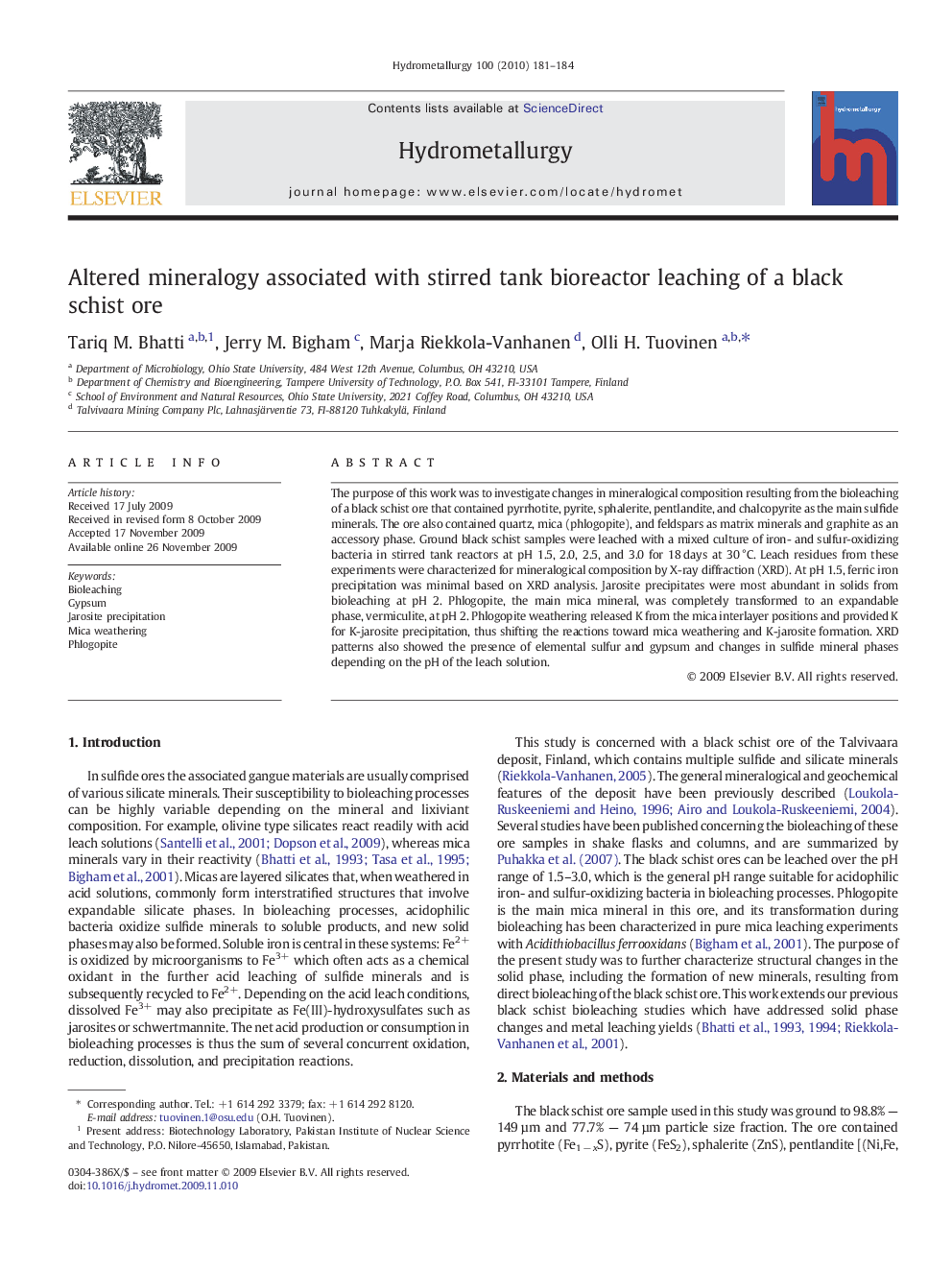| Article ID | Journal | Published Year | Pages | File Type |
|---|---|---|---|---|
| 212885 | Hydrometallurgy | 2010 | 4 Pages |
The purpose of this work was to investigate changes in mineralogical composition resulting from the bioleaching of a black schist ore that contained pyrrhotite, pyrite, sphalerite, pentlandite, and chalcopyrite as the main sulfide minerals. The ore also contained quartz, mica (phlogopite), and feldspars as matrix minerals and graphite as an accessory phase. Ground black schist samples were leached with a mixed culture of iron- and sulfur-oxidizing bacteria in stirred tank reactors at pH 1.5, 2.0, 2.5, and 3.0 for 18 days at 30 °C. Leach residues from these experiments were characterized for mineralogical composition by X-ray diffraction (XRD). At pH 1.5, ferric iron precipitation was minimal based on XRD analysis. Jarosite precipitates were most abundant in solids from bioleaching at pH 2. Phlogopite, the main mica mineral, was completely transformed to an expandable phase, vermiculite, at pH 2. Phlogopite weathering released K from the mica interlayer positions and provided K for K-jarosite precipitation, thus shifting the reactions toward mica weathering and K-jarosite formation. XRD patterns also showed the presence of elemental sulfur and gypsum and changes in sulfide mineral phases depending on the pH of the leach solution.
